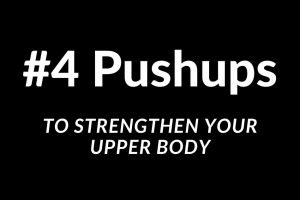Go Through This Guide & Know How to Minimize Muscle Loss When Cutting Body Fat
Those who are gym rookies might not be much aware, but once they start getting regular with hitting the gym, especially when the focus is on losing body fat, then there’s one question that often arises among them: how to minimize muscle loss when cutting body fat. And, if you’re someone having this question or want to know whether it’s possible to lose only body fat and not muscle mass, then you’re reading the right article.

Put simply, it’s possible to an extent that you don’t lose muscle mass and lose body fat, especially when you’ve to lose a high amount of body fat. Similarly, with the right way, it’s possible to lose fat and maintain muscle mass. And in this article, we’re going to detail out how you can use exercise and the right diet plan to shed body fat effectively without losing muscle mass or at least minimizing it.
What Does It Need to Lose Body Fat?
To lose body fat, you’ll need to eat less calories and burn more by doing exercise on a regular basis. And, if you lose weight without doing exercise, then it’s likely you’ll lose both fat and muscles.
Also, it’s not possible to do spot reduction of fat, and it’s a myth. No one can control from where they can lose body fat first. However, you can achieve the result you need in specific areas by losing overall body fat.
Similarly, you may not see losing fat in the targeted area, but sooner or later, you’ll find that fat is going away, and muscle mass is also maintained as you’re losing overall body fat. And it’s possible through proper exercise and diet.
Here’s How to Minimize Muscle Loss When Cutting Body Fat
Below are seven tips to follow that will help you minimize muscle loss when losing body fat.
1) Eat Enough Protein
If you’re regular to the gym, you may have heard that amino acids are the building blocks of protein and that protein helps build muscle. But, without an adequate amount of protein, you’ll not be able to hold muscle mass at the time of cutting down body fat. Hence, it’s recommended that you keep your protein level at 1 to 1.25 grams of protein per pound. Though, make sure you’re counting weight on lean body mass.
Also, go for real food that includes lean protein, such as chicken breast, lean red meat, turkey, skim milk, fish, Greek yogurt, eggs, low-fat cottage cheese, and whey protein.
2) Go for Healthy Fats
It’s true, and there’s no need to stress out that fat is essential when it comes to minimizing muscle loss when cutting body fat. Healthy fats help burn bodily adipose tissues and help to keep metabolism high by regulating vital hormones like testosterone. It’s recommended that you keep fat intake around 30% of your total calorie intake.
Some of the healthy fats that are recommended during fat loss are almonds, egg yolks, natural peanut butter, fatty fish like salmon, and salad with a dressing of olive oil.
3) Carb Cycling
Carbs have had a bad reputation for the past few years, but it’s important to know that it’s very much needed to keep your body functioning normally as well as to fuel those intense workouts. Nonetheless, in carb cycling, the trick is to regulate your carbohydrate consumption.
For instance, a 200-pound athlete will be required to go for 2 grams of carbs per pound of body weight, which will be considered as a base. Further, it can be cycled effectively, which will allow your body to burn fat while you’re still feeding your muscles. In other words, it’ll help to minimize muscle loss when cutting body fat, as you’ll have enough carbs every few days to keep your muscle tissues safe.
For carb cycling, you’ll need to go for a low carb for 3 days (such as 0.5 – 1 gram of carb per pound of body weight) followed by a medium carb day (2 grams of protein per pound of body weight) and lastly high carb day (2.5 to 3 grams of carbs per pound of bodyweight). Some of the healthy carb options to choose from are brown rice, quinoa, sweet potatoes, apples, spinach, oatmeal, and green vegetables.
Here’s an excellent example of using carb cycling by a 200-pound athlete:
- Low – 100 to 300 grams (For 3 days)
- Medium – 400 grams (For 1 day)
- High – 500 to 600 grams (For 1 day)
No doubt, you’ll have to do some trials and errors, but you’ll find out whether your body needs more or less carb days cycled in a week. And don’t be discouraged regarding maintaining muscle mass. Keeping protein and fat intake in check, you can stay assured you’ll not lose your hard-earned muscle.
And, if everything is done correctly, you should be able to lose 1 to 2 pounds of body fat per week. And, if you lose beyond that, then it’s best to take 1 or 2 days of low carb and add a medium day instead. And, if it’s less, then add one or two more low-carb days into your carb cycling diet and remove that high-carb day.
4) Proper Body Recovery
Give yourself time to recover between workouts. It’s essential when you’re eating a less caloric diet and doing intense workouts. Have one or two rest days in a week by taking complete off in the gym, as it helps to recover your body from the intense workout, which ultimately helps in maintaining or building muscle mass and losing body fat. Get plenty of sleep as it helps restore your energy level while preventing you from any injury.
5) Avoid Drastic Change in Diet & Exercise
It’s recommended that you don’t make any drastic changes in your diet plan, significantly restricting anything overnight. It’ll be challenging to keep up with it for a long time.
Similarly, avoid overtraining and stay away from any super intense advanced workout that has the potential to drain you or may lead to injury. Pushing yourself too hard very soon is not advisable as it can lead to missing out on workouts due to burnout or even longer duration of break due to injury.
6) Stick With the Workout Plan
Workouts are essential to maintain muscle mass. Similarly, sticking with the workout plan you started is also essential. Make sure you go with the workout that matches your fitness level and stick with it for at least 3 months (12 weeks) to see results.
Also, make sure that you’re selecting the workout according to your goal as well. For instance, to lose body fat, look for a workout that involves high rep ranges, cardio, and compound movements.
7) Dietary Supplement
Consider taking dietary supplements like whey protein isolate or thermogenic fat burner. However, please make sure you aren’t entirely relying on dietary supplements and that your diet and exercise are on point. Because dietary supplements only make sense or work to their full potential when your diet and exercise are going according to plan. Also, if you’re on any medication, pregnant woman, or allergic to anything, then make sure that you check with your doctor before considering supplements.
Closing Thoughts
Completing a cutting phase has multiple approaches that are more than simply reducing calorie intake. Prioritizing protein intake, implementing a proper workout routine according to your fitness level, and managing caloric deficit wisely, including essential fatty acids, plays an important role.
Remember, the key to a successful cutting phase is a sustainable and balanced approach that matches with your needs and preferences. We hope you’ve got your answer on how to minimize muscle loss when cutting body fat. Good luck!






